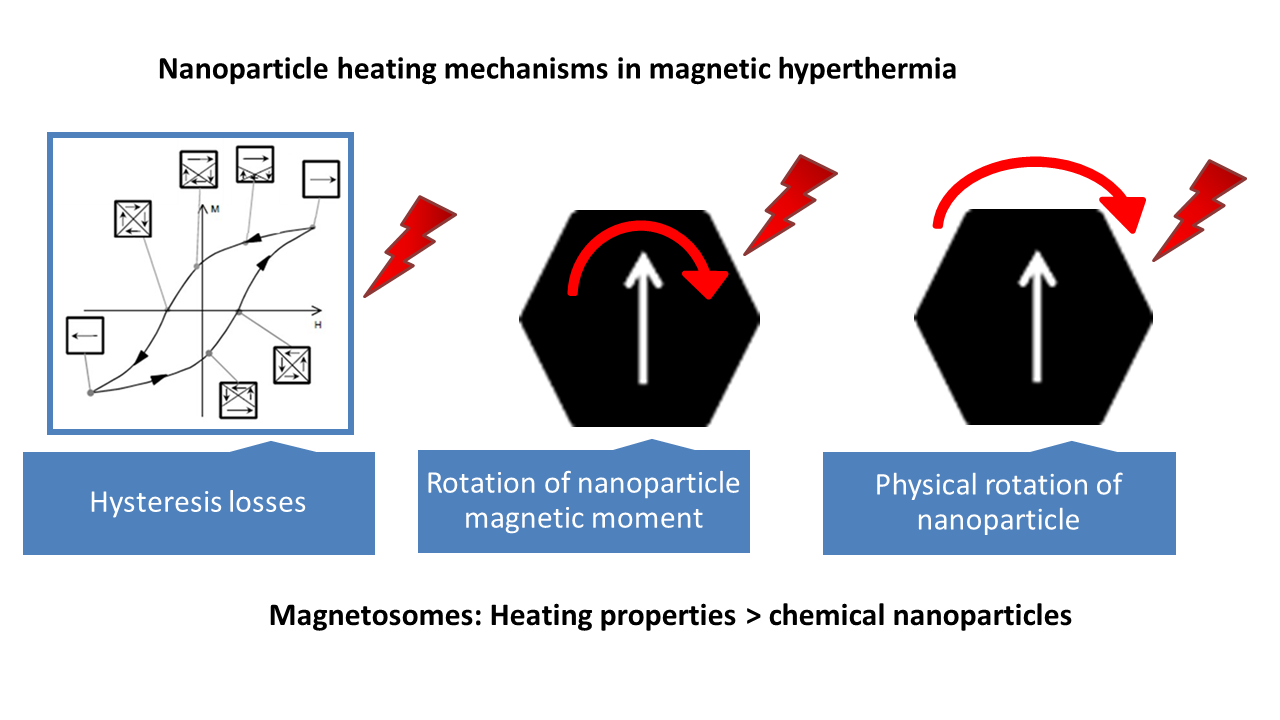Magnetic nanoparticles heat under the application of an alternating magnetic field by coupling their magnetic moment with the applied magnetic field. The nanoparticles that produce the largest amount of heat are the ferrimagnetic nanoparticles. Such nanoparticles can be produced by one type of bacteria, magnetotactic bacteria, and are called magnetosomes. Nanobacterie studied the heating mechanisms of these magnetosomes by distinguishing between heat coming from:
- Losses by hysteresis;
- Physical rotation of magnetosomes;
- Magnetic moment rotation of magnetosomes.
The figure below summarizes the different mechanisms taking place during magnetosome heating.




